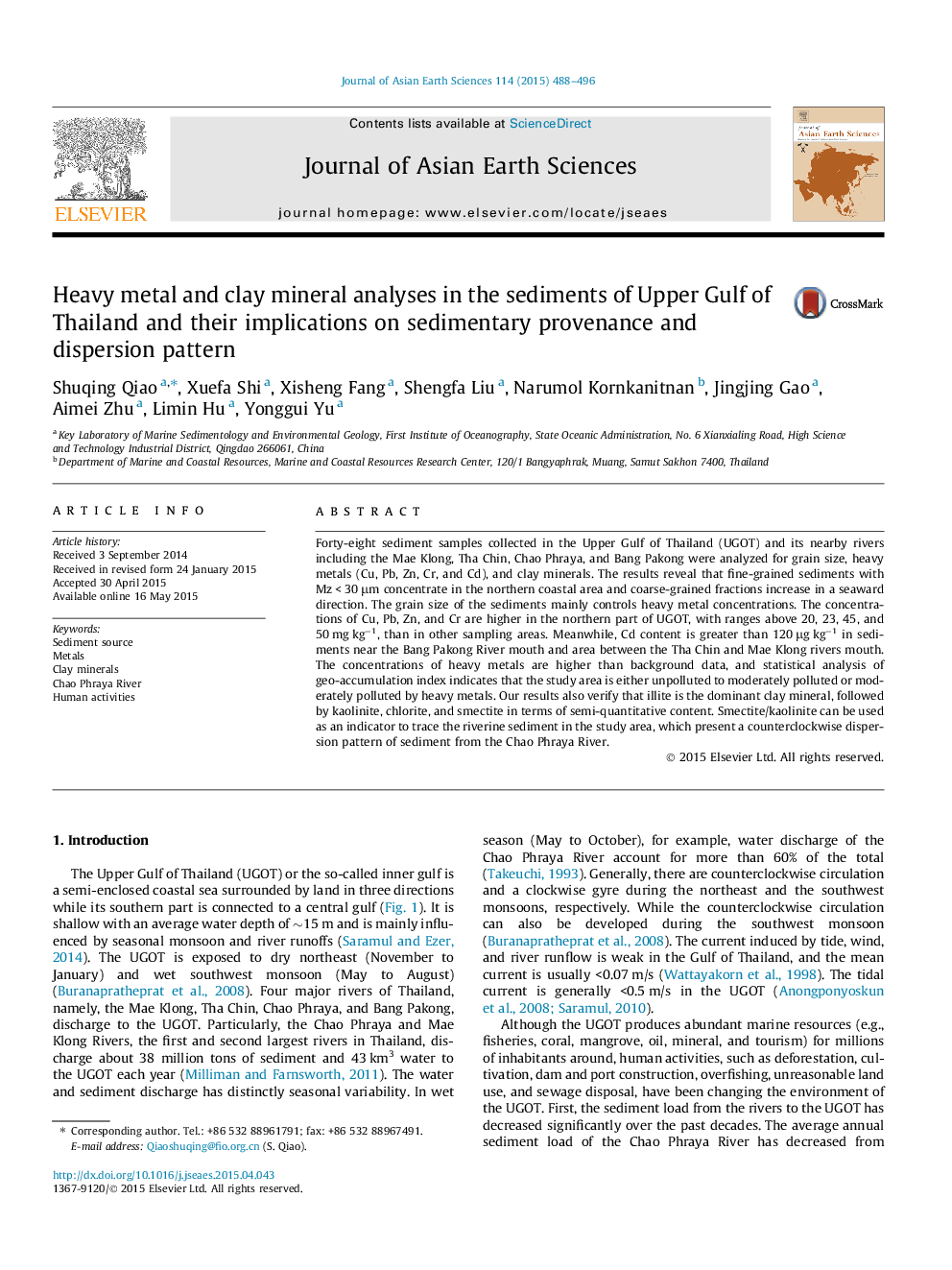| Article ID | Journal | Published Year | Pages | File Type |
|---|---|---|---|---|
| 4730154 | Journal of Asian Earth Sciences | 2015 | 9 Pages |
•Coarse-grained fractions increase in a seaward direction from the northern coast.•Sediment in the UGOT is mainly unpolluted to moderately polluted by heavy metals.•S/K ratio can be used as an indicator of the sediment from rivers.•S/K distribution presents a counterclockwise dispersion pattern of sediment.
Forty-eight sediment samples collected in the Upper Gulf of Thailand (UGOT) and its nearby rivers including the Mae Klong, Tha Chin, Chao Phraya, and Bang Pakong were analyzed for grain size, heavy metals (Cu, Pb, Zn, Cr, and Cd), and clay minerals. The results reveal that fine-grained sediments with Mz < 30 μm concentrate in the northern coastal area and coarse-grained fractions increase in a seaward direction. The grain size of the sediments mainly controls heavy metal concentrations. The concentrations of Cu, Pb, Zn, and Cr are higher in the northern part of UGOT, with ranges above 20, 23, 45, and 50 mg kg−1, than in other sampling areas. Meanwhile, Cd content is greater than 120 μg kg−1 in sediments near the Bang Pakong River mouth and area between the Tha Chin and Mae Klong rivers mouth. The concentrations of heavy metals are higher than background data, and statistical analysis of geo-accumulation index indicates that the study area is either unpolluted to moderately polluted or moderately polluted by heavy metals. Our results also verify that illite is the dominant clay mineral, followed by kaolinite, chlorite, and smectite in terms of semi-quantitative content. Smectite/kaolinite can be used as an indicator to trace the riverine sediment in the study area, which present a counterclockwise dispersion pattern of sediment from the Chao Phraya River.
